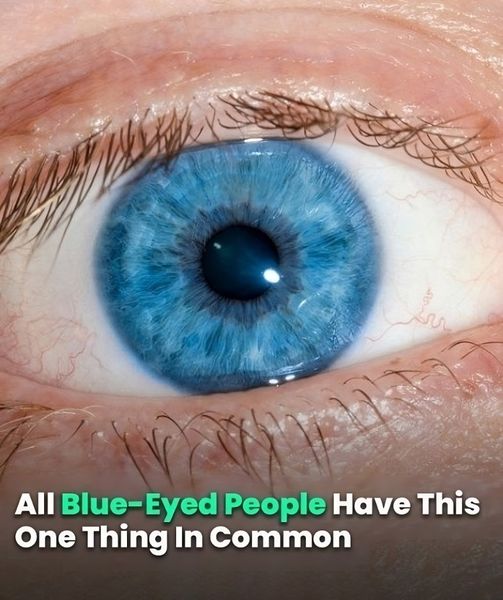Blue eyes are often admired for their striking appearance, but did you know all blue-eyed individuals have one unique genetic trait in common? While blue eyes are the second most common eye color globally, their origins tell a fascinating story of genetic mutation. This captivating eye color is thought to have appeared between 6,000 and 10,000 years ago due to a genetic mutation that continues to intrigue scientists and researchers today.

Initially, all humans had brown eyes, ranging in various shades depending on their melanin levels. The mutation that caused blue eyes altered this pattern, giving rise to the distinct hue we see today. But the shared genetic background of blue-eyed people offers more than just an interesting historical tidbit.
One of the more intriguing facts about people with blue eyes is their increased sensitivity to light. Auckland Eye, an eye care organization, notes that individuals with darker eye colors, like brown, have more melanin in their irises, which provides better protection against UV rays and harmful blue light. Blue-eyed individuals, on the other hand, have less melanin, making them more vulnerable to bright lights and prone to photophobia—an abnormal sensitivity to light. This sensitivity often leads blue-eyed people to experience discomfort in intense sunlight or under harsh artificial lighting.
Despite this drawback, having blue eyes comes with some unexpected advantages. According to Joanna Rowe, a professor at Louisville University, blue-eyed individuals might excel in strategic thinking. In her research, highlighted by The Daily Mail, Professor Rowe observed that people with blue eyes may be better at tasks requiring focus and strategy. However, she admits, “It is just observed rather than explained. There’s no scientific answer yet.” While the reasoning remains unclear, some of history’s most brilliant minds, such as Stephen Hawking, Alexander Fleming, and Marie Curie, were known for their blue eyes, lending weight to the theory.
Beyond the fascinating sensitivity to light and potential cognitive advantages, perhaps the most surprising discovery about blue-eyed people is their shared genetic ancestry. Researchers have identified a specific gene called HERC2, which plays a critical role in determining eye color. This gene interacts with another gene, OCA2, which influences melanin production. Essentially, HERC2 acts as a switch that turns off OCA2’s ability to produce brown eyes, resulting in blue eyes instead.
Professor Hans Eiberg, from the University of Copenhagen’s Department of Cellular and Molecular Medicine, has spent years studying this phenomenon. He explains, “Originally, we all had brown eyes. But a genetic mutation affecting the OCA2 gene in our chromosomes led to the development of a ‘switch’ that literally ‘turned off’ the ability to produce brown eyes.” In simpler terms, this mutation blocked the melanin levels that typically produce brown eyes, leading to the emergence of blue eyes.
The origins of blue eyes trace back to a time when humans migrated from Africa to Europe, and this genetic shift may have been influenced by environmental factors, as detailed in a study by the University of Copenhagen. The study further suggests that all blue-eyed people today may share a common ancestor. While the identity of this individual remains a mystery, the evidence suggests that this single person carried the mutation responsible for blue eyes, which has since been passed down through generations.
In light of these discoveries, Professor Eiberg remarks that research into the genetic mutation in blue-eyed individuals “simply shows that nature is constantly shuffling the human genome, creating a genetic cocktail of human chromosomes and trying out different changes as it does so.” This genetic “shuffling” led to the creation of blue eyes, a rare and fascinating trait that connects all individuals who share it.
From their sensitivity to light to the potential for enhanced strategic thinking, blue-eyed people have unique qualities that make them stand out. And perhaps most interesting of all, they may all be connected by a shared genetic heritage that stretches back thousands of years to one individual whose genetic mutation forever changed human history.





